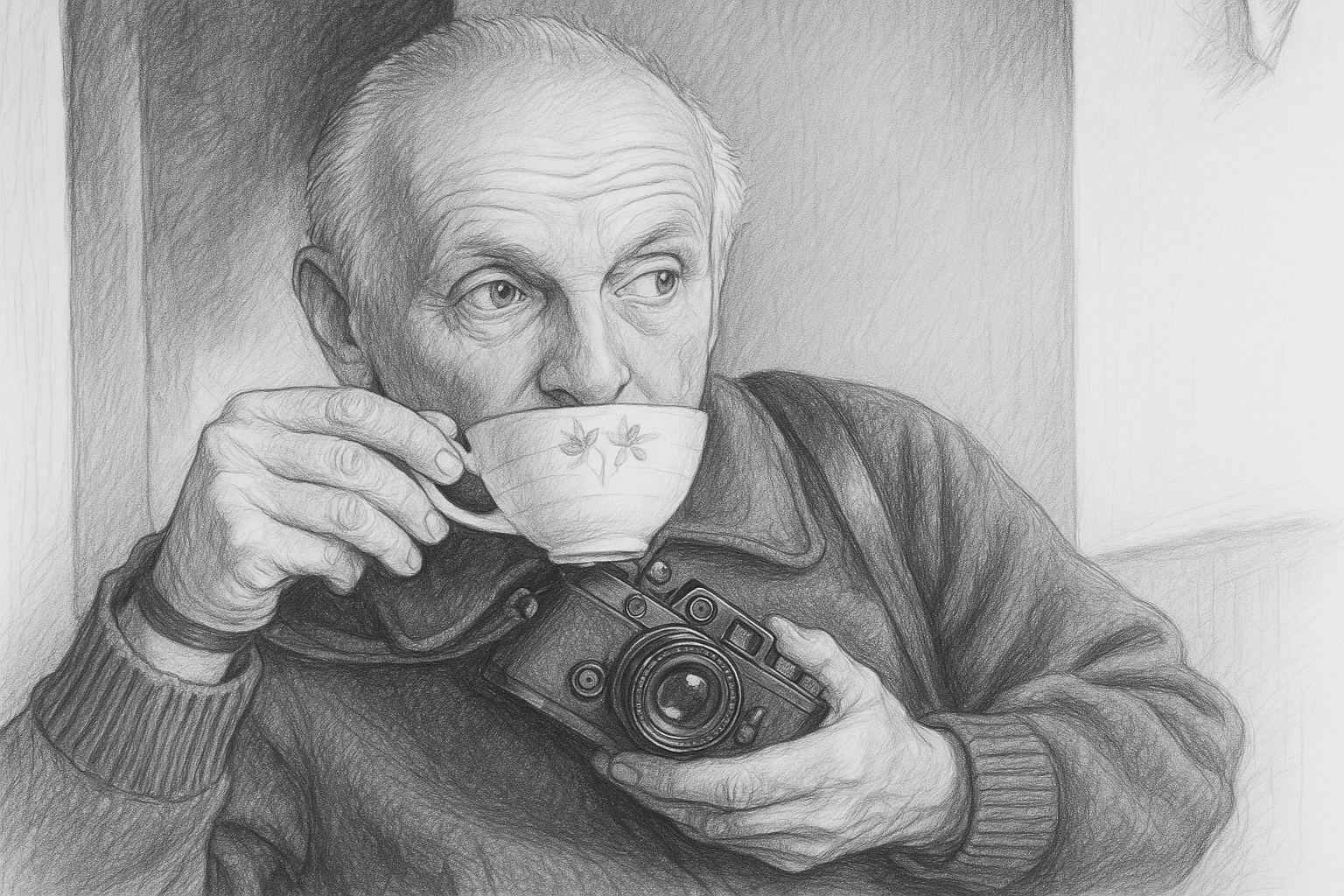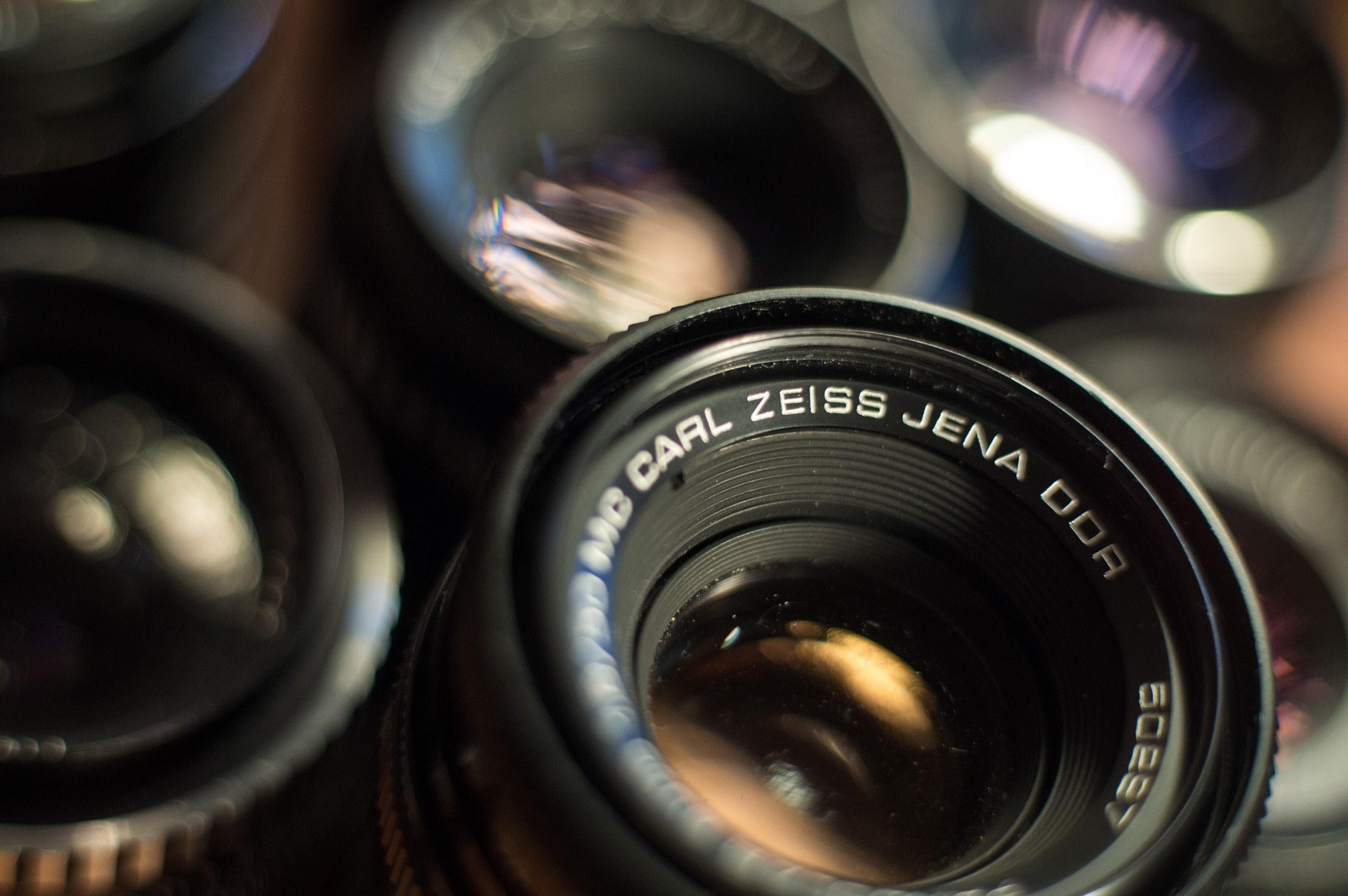
The decisive moments in Henri Cartier-Bresson's street photography
When we think of street photography as a genre today, we generally have a pretty clear idea of what practices and principles we associate with it. One of the most important pioneers of the genre, who fundamentally shaped a lot of our ideas today, is the French photographer Henri Cartier-Bresson. Not only was he one of the first historical street photographers, but he also made a decisive contribution to the concept of the "decisive moment", which has a decisive influence on the work of street photography today. This idea, first named by Cartier-Bresson, summarizes the focus of street photography on the fleetingness of the moment and the importance of a spontaneously successful composition.
Cartier-Bresson on his way to becoming a world-famous photographer
The young Henri Cartier-Bresson came into contact with art at an early age in a family context and was taught painting by his uncle from the age of 6. After studying this art form in depth for several years, Cartier-Bresson began to focus on photography in the 1930s. He was particularly influenced by the work of French photographer Eugène Atget and the ideas of the surrealist art movement.
Henri Cartier-Bresson quickly began to develop a very unique photographic style, which was primarily based on very precise compositional work and his intuitive grasp of the moment. From the very beginning, he demonstrated a unique ability to transform everyday scenes into powerful, poetic images, concentrating his work primarily on photographs of people in urban spaces. What particularly distinguishes these photographs and captures the viewer's attention time and again is the extremely humorous and surprising character of the situations depicted.
In order to capture such spontaneous motifs effortlessly, it is not only the photographer's eye that plays a role, but also reliable, intuitive equipment that allows freedom of movement and quick access. A compact, stylish bag with an intelligent interior supports precisely this kind of work - discreet, unobtrusive and ready to use when the moment arrives.
Famous works
As one of the most important photographic pioneers, Henri Cartier-Bresson was also one of the founding members of the famous independent photo agency Magnum Photos in 1947. Together with famous photographers such as Robert Capa, David Seymour, George Rodger and William Vandivert, he revolutionized the control photographers had over their work and the stories they could tell through visual means. In the years that followed, Cartier-Bresson traveled to various countries around the world to make photo reportages of important historical events for Magnum. In addition to important people of his era, he always focused his photographs on ordinary people and scenes of everyday life.
At this time, Cartier-Bresson took pictures in China, for example, which was torn apart by civil war at the end of the 1940s. He also traveled to India, which was fighting for its independence, and finally captured impressions of Gandhi's assassination in 1948.
After Stalin's death, Cartier-Bresson traveled to the Soviet Union in the 1950s and captured the harshness of everyday life there. All in all, these trips produced a large number of haunting images, which today serve as historical documents, but always also tell fundamental stories of human life full of elegance.
The concept of the"decisive moment"
In addition to his impressive images, Henri Cartier-Bresson also left the world a completely new concept of photography, which formed the core of his street photography and was to develop into one of the most important leitmotifs of the entire genre: The idea of the decisive moment. Henri Cartier-Bresson used this concept of the "moment décisif" for the unique and completely spontaneous moment of perfect unity of form and content, which only lasts for a fleeting fraction of a second. In his opinion, this one moment summarizes the entire meaning of a scene and creates maximum emotional resonance.
According to Cartier-Bresson, it took a lot of planning, patience, intuition and a trained eye to capture this unique, decisive moment. For him, perfect familiarity with the photographic equipment was a matter of course and he attached particular importance to being as discreet as possible and using unobtrusive photographic equipment when photographing in public spaces. Cartier-Bresson himself always used a discreet Leica camera with a 50mm lens and avoided any intervention or posed shots. Instead, by waiting patiently, he relied on a natural condensation of events that came together as if by themselves to form a coherent composition.
This restraint, the merging with the surroundings, remains an essential element of authentic street photography today. If you want to be discreet but well prepared on the road, you will benefit from a camera bag that doesn't look like one - but is made for exactly that: protection, style and access all in one.
What was revolutionary about this approach to photography was that Cartier-Bresson started from a fundamental honesty of the moment and therefore rejected any manipulation of the photographed situation. He always emphasized that reality tells the best stories and always strove for authentic, unembellished testimonies of his time. His pictures offer the perfect proof of these theses, as they show the visual poetry in ordinary everyday moments in a unique way.
Late works and return to drawing and painting
From the 1970s onwards, the now world-famous and celebrated photographer took a surprising turn: he largely gave up street photography and returned to the way he had worked at the beginning of his artistic career, devoting himself entirely to drawing and painting. Cartier-Bresson himself once commented on this move away from photography with the thought that perhaps he had now expressed everything he had to say with the medium of the camera. However, his paintings and drawings achieved almost the same level of recognition as his famous pictures.
Even though Cartier-Bresson hardly created any significant new photographic works from the 1970s onwards, his great influence as a thinker and visionary in photography remained. Through numerous books with his photographic work and many exhibitions, his work became more and more widespread in the following years and his philosophical views on street photography gained influence.
Conclusion
More than almost anyone else, Henri Cartier-Bresson's work and photographic vision shaped the genre of street photography and changed it forever. His work, based on observation, intuition and the search for perfect visual harmony at the moment, continues to fascinate today and manages to inspire a multitude of modern street photographers just as much as past generations. His images remind us to recognize and appreciate the beauty and significance of the fleeting moments around us. Cartier-Bresson taught us that the street itself is a stage on which countless decisive moments take place, just waiting to be captured by an attentive eye and a patient camera.
Anyone who sets foot on this stage today should be able to move as Cartier-Bresson once did: free, light, ready. A minimalist but robust setup starts with choosing the right bag - it not only protects the equipment, but also becomes a silent companion for every photographic discovery.

